On paper, the trip sounded exciting, if you avoided any recent BBC thrillers about an out of control sleeper train. Eurostar to Amsterdam and then the Nightjet all the way to Vienna.
Unfortunately, Austria had experienced its own disaster, along with a lot of central Europe, as catastrophic floods saw the region of Austria that contains its historic capital declared a disaster area a week before.
Lower Austria (Nieder Austria) is named not for its location (in the North East of the country) but because it is low-lying. While Vienna itself was largely untouched, thanks to its cunning flood alleviation plan, as our departure approached it was clear that there was still disruption, and unclear that our sleeper would run.
We were advised to go from Brussels straight to Frankfurt and then on to Nuremberg. An extra night and a night out in Nuremburg, which is apparently famous for its Christmas markets.
The next day it emerged that what should have been a direct train to Vienna was not running and it was a case of getting two local trains instead before picking what should have been a faster train at Linz that had come from Salzburg.
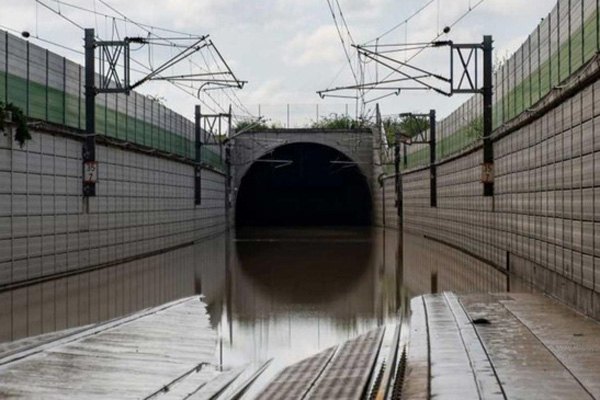
Image: OBB Infra
The problem was that Vienna’s four-track western line was massively affected by what OBB Infra said was rainfall outside the Austrian building standard, which is 100-year rainfall, especially the ‘new western line’ between Vienna and St. Pölten.
Half a year's worth of rain fell in Lower Austria in five days.
A single-track section of the ‘old’ western line through the Vienna Woods had been re-opened but with such limited capacity that Deutsche Bahn trains were not permitted to use it.
We learned afterwards that parts of Tullnerfeld station, which was built in 2012 to serve Vienna’s western suburbs, had been under a metre of water for more than a week.
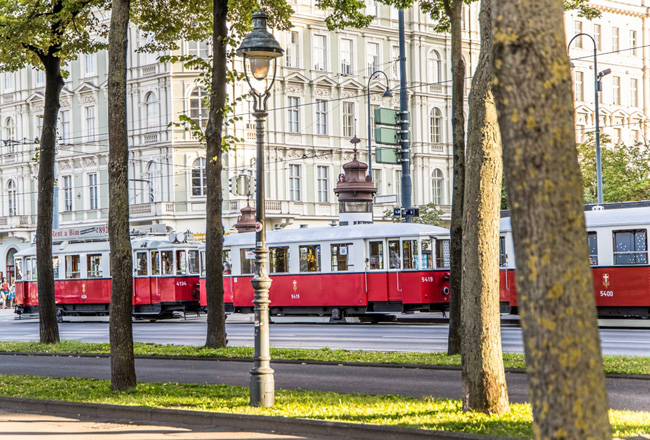
Image: Shutterstock
From our hotel near the main railway station, Vienna’s excellent tram network, which includes both modern walk-through trams and older trolley cars, proved an efficient and reliable way of getting us to the city centre, even if they sometimes shared the road with the traffic…jam.
After a couple of days eating pastries and Sacher Torte, our journey home began, with Salzburg the first stop.
That trip was of course delayed as it had to go back to the west to Linz before forking south. In the grand scheme of things, the disruption to our journey was trivial compared to what many people had experienced.
The train station in Salzburg is a pleasant and efficient transport interchange but not the most picturesque part of the town – the Aldstadt, which has no room for a railway.
But a brief walk through Mirabel Gardens of Sound of Music fame brings you out on the river bank and one of those footbridges that people insist on defacing with padlocks.
Nevertheless, from the middle of the footbridge, the middle of the river and the valley, Salzurg opens out to look beautiful in every direct.
The Aldstadt itself has a number of attractions for the Mozart lover, including his birthplace, but we were a bit baffled to see so many young and older people in traditional dress, suede shorts and all.
Right in the centre, a party was going on and we worked out via a bit of googling that we had stumbled into the celebrations for St Rupert’s day – the town’s patron saint.
The next morning we were hopping on a bus to St. Leonhard, about half an hour away, where a cable car took us to the top of the Untersberg mountain, which still held the remnants of September snow. Among sights way down below was the A10 Tauern Autobahn, Salzburg’s airport and some small cows.
Another bus ride took us past gorgeous pastoral scenes with larger cows and back to Salzburg, where a funicular takes tourists in slightly less dramatic fashion up to the hilltop castle.
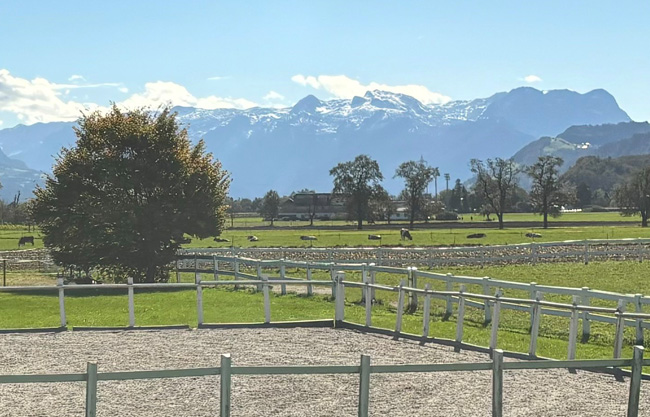
Large cows photographed from a bus
We expected the next leg of the journey, to Zurich, to be long but to have the compensating benefits of some beautiful mountain scenery. Sadly, our train was both late setting off and late arriving.
Close to our hotel, which was just across the bridge from the station, another funicular, known as the Polybahn, takes you up the steep hillside to the university.
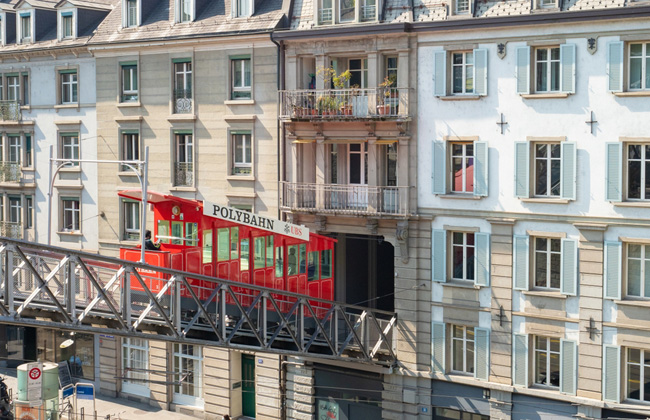
Image: Shutterstock
There are of course also trams, buses and boats, but it is the railway station itself that is the transport highlight of Zurich. A fully open plan terminus where some platforms appear to be part of the streetscape, the station features a largely unnecessary Haupthalle – a huge space that hosts events, including the occasional Diamond League pole vault competition.
Walking back through the station one evening we were baffled by the noise from what appeared to be a fully-fledged building within the Haupthalle, which turned out to be the Züri-Wiesn Oktoberfest.
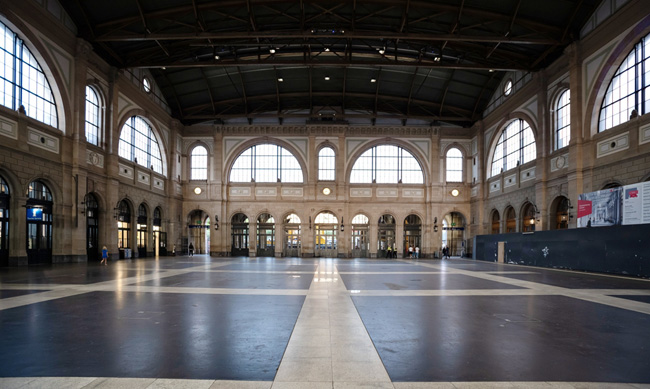
The Haupthalle. Image: shutterstock
What should have been a single train journey back to Paris involved a change at Basel, where the food options at the Migros Eatery have to be seen to be believed. More like Harrods food hall than Upper Crust.
A final tip from a trip home that thankfully went to plan and to time. T+ tickets for the Paris Metro etc can now be loaded directly onto your smartphone via the Île-de-France Mobilités app, avoiding the (perhaps deliberately) long queues you always see at ticket machines in the city’s main train stations.
Once you’re through the gates, and particularly if you have luggage, the Metro itself is still as clunky as ever.